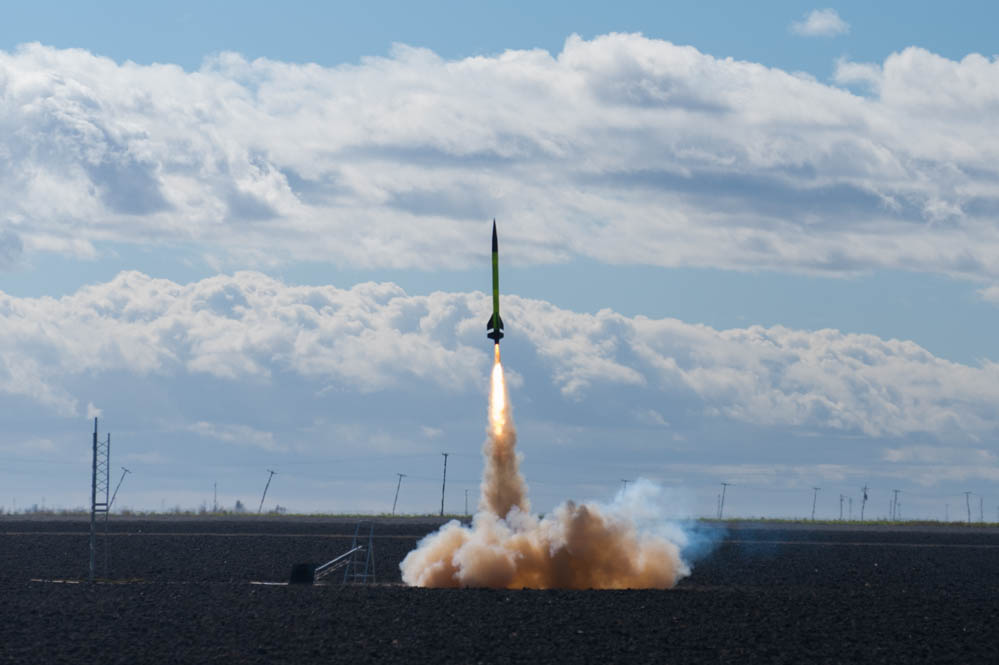Thanks to everyone for thought provoking questions and comments.
Here's my working theory, and it's the most obvious: the charges were simply not large enough to
reliably shear the #4 nylon shear pins.
- The #4 nylon shear pins were probably unnecessary; could likely have used #2 shear pins.
- I put too much trust in a single data point; one ground test was insufficient. I should have tested with larger and smaller charges to obtain more data.
- Had I properly weighed the risks, I should have chosen the risk of charges too large (toasty chute) rather than too small (ballistic return, non-deployment, shredding the main).
Next steps:
Looking at the bright side, I have a test airframe to work with before building my next project. It will be awhile before I can setup the tests, but I will eventually follow-up this thread with some results. I will likely not purchase the replacement project, a.k.a "Judgement Day" until January.
In addition to "what to fix next time", there are also the lessons, "what went right". I'll add those notes in a bit.
All valid points that are of course easier to make retrospectively (retrospectroscopically) #2 pins maybe just two or three of them for apogee? Small vent hole over area in the tube where some dead space exists. You can get some cardboard, soak in borax/boric acid let dry. Cut a circle, set that on top of your "blow up the tube" apogee stratagem charge holders and put your dog barf on top of it and below the cardboard disk. When it blows, some of the flash can be reflected back down into the surrounding dog barf by the cardboard. Of course, some of the flame will go past the edges, moreso on the side that fires first tilting the cardboard end up and the barf on top can act as a flame quench. Fearful of burning the chute? Double wrap with a chute protector or at least do a double layer that is going to take the brunt of the flash (which may be blunted by some of the techniques above).
I find that "flameproofed" cardboard adsorbs a major part of the flash and the dog barf on top will buffer the rest of the flame. You take caution with the drogue with an extra layer of protection closest to the flame front and it should remain nice and pretty. You gotta remember, the drogue and harness isn't going to be as tight a pack generally so is relatively easy to blow out. (Unless it is tight in your situation. I can't quite tell from the diagram)
Don't wanna use cardboard? Use more dog barf and layer the chute protection. Who cares if there's a few burn holes in the drogue? As long as the main survives you're good.
The other thing Bill is now there is the impetus to do multiple tests. Heck you can use a beater drogue and perhaps a well used but not "holey" chute protector and similar "used" harness material on the tests. You get it dialed
in and then use the 1st string material for the final test or if the "used" stuff is very close to what you are going to fly with stop there.
Now if I understand it correctly, Your main deployed albeit under the high energy situation without issue aside from getting blown to bits by the forces? If so, you will have less trouble refining that, if any. Good luck on the next try.
I had a similar though much smaller scale failure when making a tracker test mule rocket. Apogee only motor deployment with a chute release. I thought I'd use two 2-56 nylon "screwpins" to secure the nosecone and be
very "precise" about the charge. I took an empty motor casing and threaded the ematch/canister wires through the forward bulkhead/charge well for a ground test. Calculated .9grams of 4f and did the test. Pushed the button on my wireless remote and everything was ejected and the rocket body jerked 2.5 feet (I measured it) forward. Hmmmmmm, that's perfect. No steek'in need to cut the charge or add the whole 1.3grams that comes with the motor.
So's I now add .9 grams 4f to the charge well the day of the flight and it goes in ballistic. Why? Charge blew? I made the fatal mistake of not accurately reproducing the conditions! Charge is directed with the canister and
powder in the motor well can dribble aft on top of the delay grain that blows "back" out the end and not available to pressurize the chute bay!! Mister smarty pants got bit bad there.
Your problem was way more subtle than what old stupidhead did here. I'm sure your TAPS and others would have pointed that out but it was not apparent. Especially with that nice video test. You got a whole lot of people out there thinking about their own situations after you shared your unfortunate experience. Well next time will go better for you and I bet a lot of "next times" will be better with mishaps prevented with other fliers too!! (Yeah may any reader not repeat the mistake I made above too.) Kurt Savegnago










